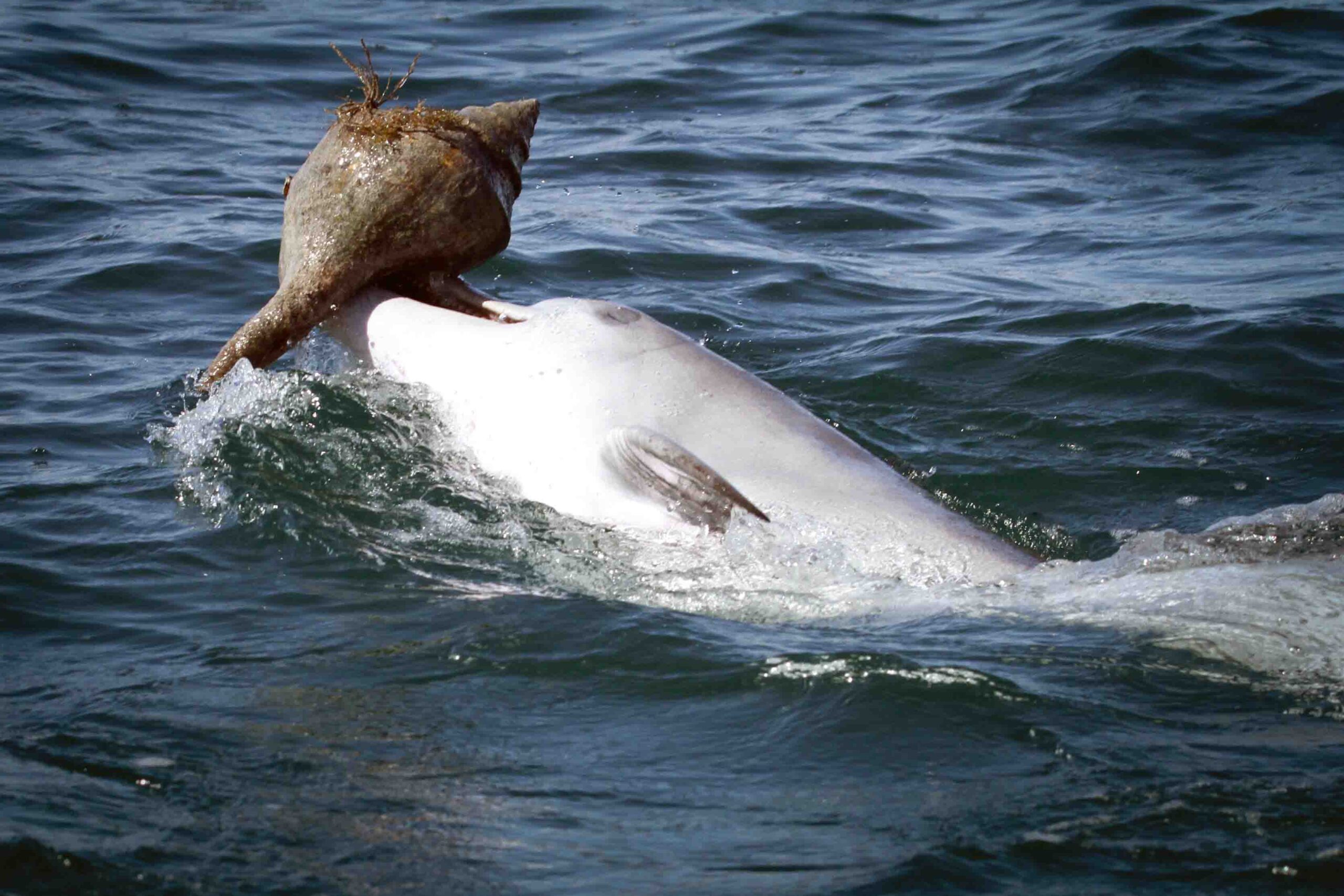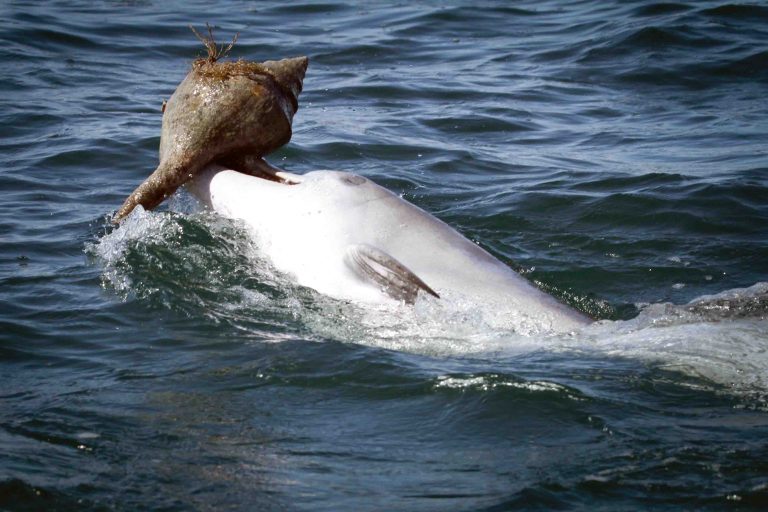DIVING NEWS
Dolphins pick up ‘shelling’ habit from friends

Picture: Sonja Wild / Dolphin Innovation Project.
Dolphins are like the great apes in that they learn foraging techniques not only from their mothers but from their friends – that’s the surprise finding from a new scientific study carried out in Shark Bay in Western Australia.
Indo-Pacific bottlenose dolphins have been closely studied in Shark Bay for more than 35 years, and their foraging tactic known as “shelling” was first noted in the mid-1990s.
Dolphins know that prey hides inside the large empty shells of giant sea snails, so bring the shells to the surface with their beaks. They then shake the food into their mouths – like the last crisps from a packet.
Dolphin foraging techniques are typically taught to calves by their mothers, and this “vertical social transmission” between generations, practised by most animals, had long been considered the only way they learnt. A technique typically passed on by dolphins in this way is “sponging”, the placing of sea sponges over their beaks to protect them while foraging.
But now it has emerged that the transmission of shelling is horizontal, with the dolphins learning it by imitating the behaviour of their close associates, a method previously associated only with gorillas, chimpanzees and humans.
The study was carried out by an international team of researchers led by Dr Sonja Wild, a PhD candidate at the University of Leeds and now a postdoctoral researcher at the University of Konstanz in Germany.
The team conducted boat-based surveys for 11 years up to 2018, identifying 1035 individual dolphins from 5278 group encounters.
The shelling behaviour happens so quickly that it is difficult to observe, but 42 such events performed by 19 individuals were documented. Behavioural, genetic and environmental data was then combined to model the different transmission pathways of shelling.
“These results were quite surprising, as dolphins tend to be conservative, with calves following a ‘do-as-mother-does’ strategy for learning foraging behaviours,” said Dr Wild. “However, our results show that dolphins are definitely capable, and in the case of shelling, also motivated to learn new foraging tactics outside the mother-calf bond.
27 June 2020
“This opens the door to a new understanding of how dolphins may be able to behaviourally adapt to changing environments, as learning from one’s peers allows for a rapid spread of novel behaviour across populations.”
In 2011 Shark Bay’s seagrass habitat was wiped out by an unprecedented marine heatwave, killing off many fish and invertebrates – including the gastropods that originally lived in the giant shells. It’s thought possible that this encouraged the dolphins to adopt new foraging behaviour from their friends, with the abundant dead shells boosting learning opportunities.
“The fact that shelling is socially transmitted among dolphin peers rather than between mother and offspring sets an important milestone, and highlights similarities with certain primates, which also rely on both vertical and horizontal learning of foraging behaviour,” said the senior author of the study, anthropologist Prof Michael Krtzen of the University of Zurich.
“Despite their divergent evolutionary histories and the fact that they occupy such different environments, both dolphins and great apes are long-lived, large-brained mammals with high capacities for innovation and the cultural transmission of behaviours.”
The study is published in Current Biology.

